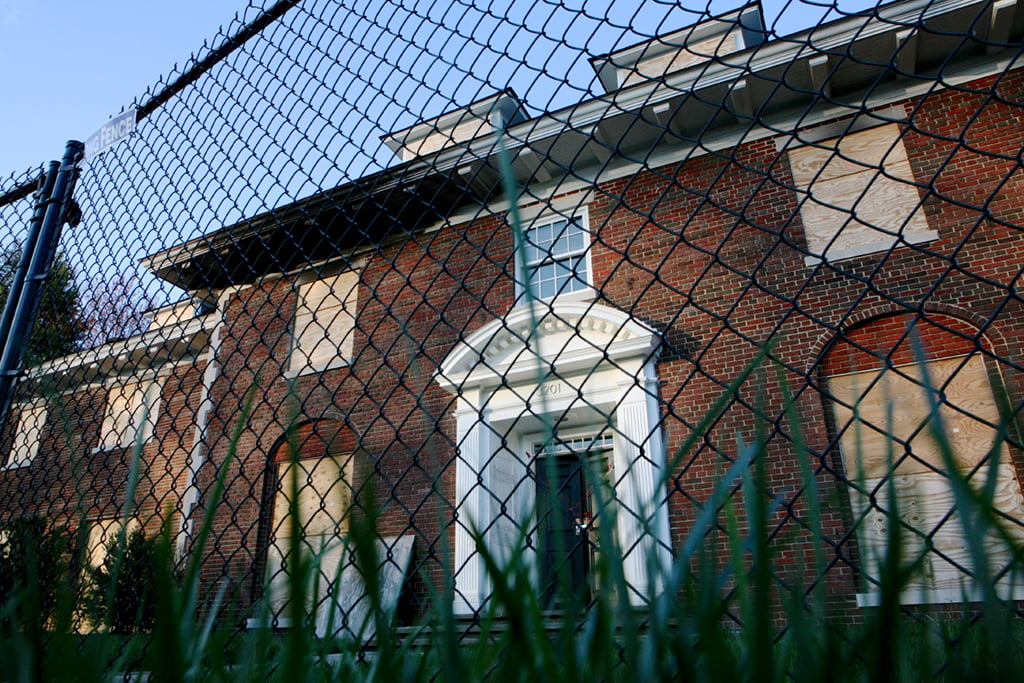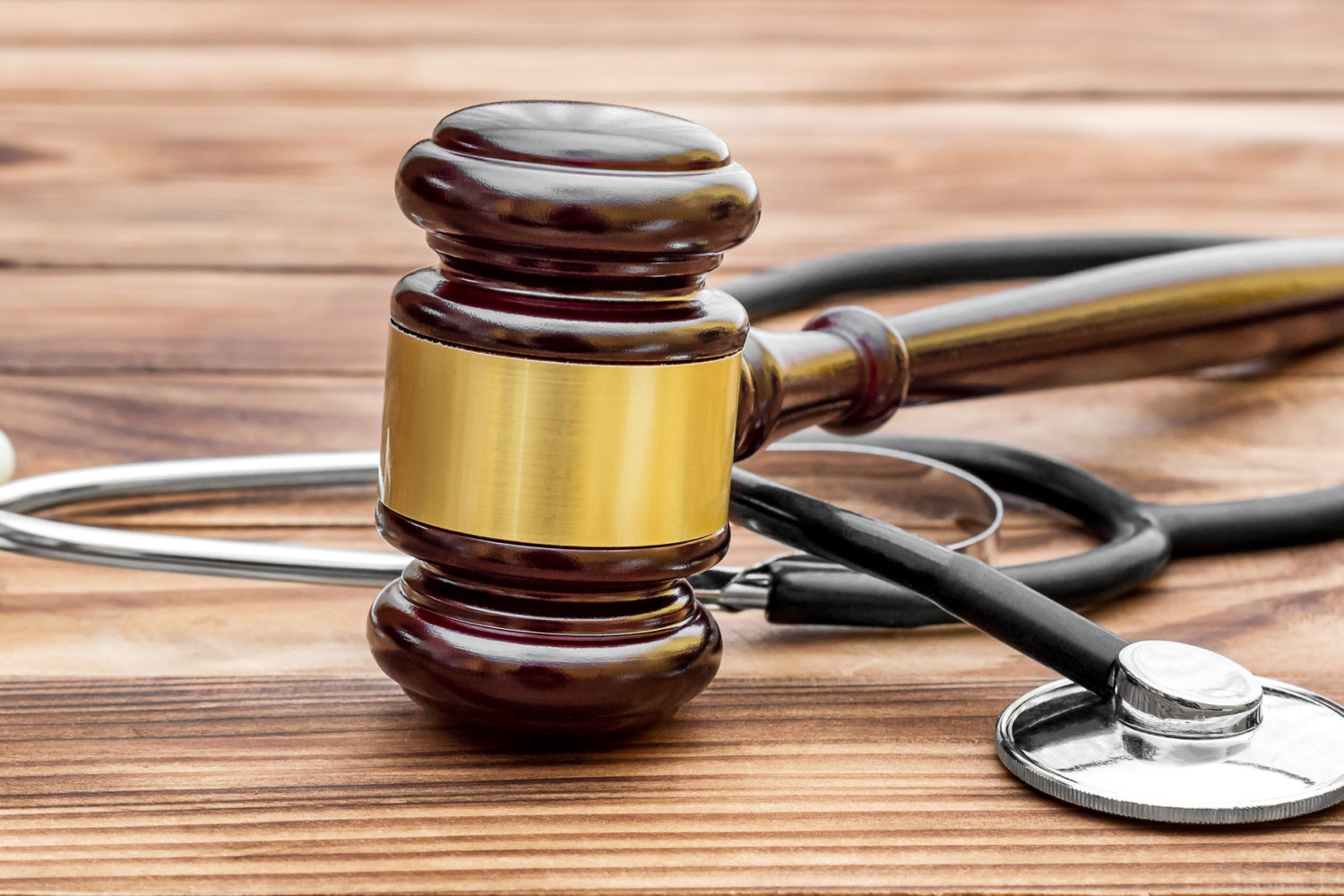A short while ago, I found out that my friend Jeremy Holden was going to report to jury duty—two months of it. He couldn’t talk about the case, but it became clear pretty quickly that he was going to be sitting on the jury for one of the most brutal crimes in DC history: the so-called mansion murders. Daron Wint was facing 20 charges in the torture and killing of Woodley Park’s Savopoulos family—parents Amy and Savvas and their ten-year old son, Phillip—and their housekeeper Veralicia Figueroa.
Here’s what the experience was like for him, in his own words:
I just got a regular “you must report to this courthouse” summons. So fine, it’ll be a day off work, and fingers crossed I get excused. They give you that orientation video and I was either working or doing a crossword puzzle and I hear the 12 Angry Men clip in the background. The narrator is saying, Many people, although the process is arduous, express great pride that they went through this. And I was kind of rolling my eyes. And then lo and behold my number gets called.
Like most people in DC I was aware of the crime when it had happened, but also like a lot of people in DC my primary interest is in national news. I couldn’t have told you that day, too many details of the crime, besides a mansion, a fire, something about a car. That’s not enough to say: I know too much, please excuse me.
Daron Wint was there from the moment we walked into the courtroom. We all got called up that first day to talk to the judge about any conflicts, so you’re within 15 feet. He was just there listening to the proceedings. I never got the sense that he was eyeing me up or anything.
At the outset it was more curiosity. I think we live in a media landscape where we see a lot of graphic images. But it’s mostly fictionalized, or it’s a documentary—there’s that distance. There’s still a little of that social distance here because none of the jurors know the victims or the families of the victims. But I was curious at the outset. Knowing we would be seeing some pretty graphic images, and hearing some pretty graphic accounts of some of the worst things that happen in society, how was I going to respond to that? Was I going to get nauseous? It’s not a question of is this going to be unsettling?. It’s a question of how unsettling is this going to be? It certainly wasn’t something I was running toward, but I didn’t think it was right to run away from it. I asked myself, is there any reason I don’t think I could be partial? And it didn’t feel like I had any true reason that I couldn’t handle this.
I wasn’t going to lose any pay, so that helped ease the burden. That said, life doesn’t stop. Dinner needs to be cooked. The dog needs to be walked. I teach a class at night. What became challenging was trying to find that off switch. It was trying to not think about: How do these stories line up? How do I get that picture out of my mind?
You couldn’t talk about it. I think you almost make the choice to withdraw a little bit. How do you go out to drinks with friends or dinner and have a conversation? The reality is, if you’re on a trial that is getting heavy media coverage for two months and your friends and coworkers know that you’re serving on jury duty for two months. People start to draw connections, and there are only so many ways you can try to deflect. It becomes easier to pull back.
For me the first few days, it was pretty easy to get into a rhythm. Go through the metal detectors, go through the back maze that leads to our room. The first day somebody went around the table three or four times trying to memorize everybody’s names so we weren’t just referring to each other as numbers. But you go in and sit down and it’s off to the races. Opening arguments begin.
Some jurors would go to lunch together. For me [the lunch hour] was an opportunity to turn my brain off. It’s similar to having work friends—you learn enough about each other to talk about your lives a bit. People would ask me how class was the night before, or if I’d graded my midterms yet.
As quickly as it ramps up, it ramps down just as quickly. You’re in this highly emotionally charged story, you’re part of it, you’re watching it for two months, and then it’s over, and then the toughest part happens—you have to render judgement. And then it’s: ‘Thank you, you’re free to go. There are some cameras outside, talk to people, don’t talk to people.’ And it’s like, oh, when am I going to see you again? You’re the person I’ve talked to about this everyday for the last two months. Do we become Facebook friends? Do we exchange emails? Or is it like that last day of summer camp where I leave to go home and write a couple letters and that’ll be that?
Judge McKenna ran a great courtroom. There were moments of levity— like when she insisted on letting everyone know that the police tool is spelled A-S-P so as to avoid any misunderstanding as to what the officer used to knock on the door.
Anybody who was there throughout the trial remembers Felicia [Ruffin, who was with Wint when he was arrested], not so much because the evidentiary value of her testimony but because she was very raw and candid and funny and emotive. I thought the testimony of a park police officer—retiring in 72 hours—who reenacted the drive up New York Avenue to corroborate the timeline was fascinating.
The photos, the testimony from the medical examiner in its entirety—that was a difficult day. Hearing that there are multiple causes of death for multiple people and that multiple weapons were used, and looking at the images that prove it—it’s just awful. There were times when articles of clothing from the victims were unsealed and still had the odor of gasoline and char. Powerful emotionally but not powerful in terms of evidence of who caused those clothes to still reek of accelerant and charring three years later.
Hearing from the defendant himself, hearing from his girlfriend, those were heavy days because we didn’t know when they were coming. We didn’t get a list of the witnesses we were going to hear from. So all of a sudden you walk in and today is CSI day, and yesterday was CSI day, and the day before that was fire evidence day, and now all of a sudden you’re hearing from the girlfriend of the defendant.
What I call the CSI days—the technical days about digital footprints and DNA evidence—were incredibly fascinating and important from an evidentiary perspective. But from an emotional perspective you get a little punch to the gut when it’s like, oh wow, the girlfriend’s testifying. The stakes have kind of been elevated as a human component comes back into it. I’m sitting in judgement of evidence but I’m also sitting in judgement of a human.
[Amy Savopoulos’s] father testified. It’s heartbreaking. Grandpa’s on the stand talking about the bat he bought his grandson and it’s like, who has tissues right now? And then it almost feels cold to try to activate that part of your brain that says, the fact that grandpa bought this bat doesn’t help me determine what happened on that house in those days. And then you’re like, I’m such a terrible person—I’m trying not to be moved by this incredibly moving moment.
I had some serious questions about the evidence. The digital footprint aspects. The fact that no one knows where [Wint] was on [the days of the crime]. The fact that DNA is in the house. That’s pretty compelling. The reality is that we had an alternative explanation that we had to consider and had to consider seriously [Wint alleged that his brothers committed the murders]. And there was a good chunk of the deliberations that were based on that question: Is that alternative explanation for why he was in the house, the explanation of when he got into the house, and why, and how things transpired—was it credible? Now all that said, I supposed one could argue that by weighing his explanation, finding it lacking, and determining whether the evidence is sufficient, then maybe in fact the evidence was sufficient at the outset.
We had a great group of people. The deliberations were calm, and very methodical. We went around the room and gave everybody a chance to pose questions that they wanted to discuss.
And then we’d kind of go through the best timeline as we can lay it out. We had to methodically go through all 20 charges, and each charge has multiple elements to it. And kind of go through that linearly and say, how do folks feel about this? And finally work our way up to this question and figure out Daron Wint’s culpability as the evidence lays it out. I felt that people who had reached the conclusion that we all eventually came to, the people who got there sooner were very reluctant to try to persuade anybody. It was, I’m not here to try to persuade you, I’m here to try to help you brainstorm and figure out what questions you have outstanding about any charge or any evidence. I’m here to try to help you get an answer to a question, not how do I help you answer it the same way I do?
There were multiple causes of death listed. And because of that multiple types of weapons that were used. And I think that leads to a lot of different paths to whether Daron Wint was guilty. And I think that that opened up some questions. The question of acted alone or not was something that was part of the deliberations and at different times meant different things to different people.
One of the things that gave us the most amount of pause was this question of, if I can’t paint the entire picture of why and how and when, and if there are multiple accomplices, can we still come to this final judgement? And it was a process of talking it out. Do we have to know why the van was at 2400 Pennsylvania Avenue? How did that happen? Why two pizzas?
Some of the charges fell into place more than others. You have the felony murder charges. There’s a connection between those and the underlying felonies that exist. If the room is divided on one of the charges, the conversation was less about am I’m right or wrong? People who had come to a conclusion of guilt wanted to check themselves. I think the weight, the finality of it is sitting with you. At no point did I get the sense that somebody was looking at their watch and saying look, this has been two months, I’ve gotta get back to work tomorrow. I think it was more a question of: I want to test my steel in the fire. Am I not there yet? Did I get there too quickly? Am I overthinking something?
Toward the end it became more emotional for people. People tried to compartmentalize and focus on the analytical side, and then once it was time to vote, the emotions started to get a little more powerful. [Wint was found guilty on all 20 charges]
There was some anxiety in the courtroom. I thought about this in the aftermath. How to square being confident that we had reached the right decision with the anxiety of announcing it. And questioning whether that anxiety was related to that level of confidence. And I think it does go back to that human element. Humans beings can do monstrous things, but they’re still humans. And sitting in judgement of them and coming to that final decision on guilt just carries the weight of being human.
Even the right decision is going to have that impact on humans. It could be the right impact, but you still feel that.
It was bizarre to walk out. On the one hand I wanted to get back to living life. I wanted to get back to not having to find this off-switch to cook dinner or walk the dog or teach a class. But then suddenly it becomes final for you. This has been consuming for two months. This has been the thing that overwhelmed my thoughts. That in a quiet moment outside of the courtroom would just creep in. You’re somewhat passive, but in the end a participant in a real life drama. And then it’s over. And all of a sudden you realize, I’m not going to sit down Monday morning and see Judge again. We’re not going to see these four lawyers that we’ve been watching present to us, try to persuade us. It’s over. If I read a very good book and I’m just enrapt by it, and I get to those last couple pages, I have this thought that I’m not ready for this book to end. It was similar to that. And there’s almost a guilt factor too. This isn’t my own personal melodrama.
I don’t feel particularly different. It might be awhile until I watch a Law & Order marathon again, but I had never spent this much time in a two month period thinking about the monstrous things that people do. It doesn’t shock me that humans do monstrous things. My view of the world hasn’t changed. At the end of the day one person was convicted of doing monstrous things to four people, and I don’t say that to diminish what that means to those four people and their families. I say it in terms of—it’s one piece of evidence of the monstrous things that humans do, but it doesn’t make me think the world is full of people who are doing awful things to each other.


















